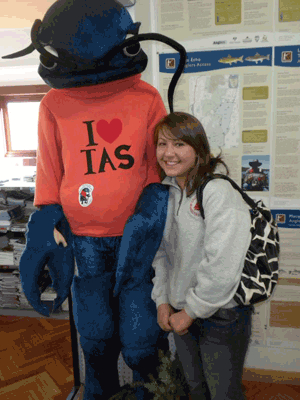
Every day a milk truck comes to Shoestring Dairy. We exchange our normal "G'day Mate," then the friendly man hooks up the hose and pumps our cows' hard work from our tank into the truck. He prints off a small report of the milk's somatic cell count (SCC), volume, and other components. Before the man drove away one day, I had a sudden urge to ask him where all the milk goes once it leaves our farm and is processed at the creamery.
Once the milk is collected in Tasmania, many would think that most of the milk would go into fluid milk for our biscuits (aka cookies), cereal, and chocolate milk. I have learned that only about 10 percent of Tasmanian milk actually remains fluid. Most of the milk in Tasmania goes into cheese and dry milk powder that gets shipped to Japan, Singapore, and China. Due to the fact that most of dairy products are made into longer-lasting products, Tasmanian dairies can benefit to be run seasonally.
In Australia, companies base payments on fat and protein components very similar to the U.S. With the market of cheese and powdered milk, Tasmania is leading the nation in protein and fat composition with an average protein/fat composition (%) being 3.41, while the nation sits at 3.34. This makes Tasmania the number one state in the nation.
In Tasmania, the average cow produces around 4,633 liters annually about 1223.91 gallons (10,526 pounds) per cow. This is great accomplishment for the Tasmanian dairy industry. In 1970, the average Tasmanian cow was producing 2958 liters (781.42 gallons or 6,720 pounds) of milk each year. The increase of milk production output is due to increased cow numbers and improved cow yield.
It is important to note that dairy farmers are not always breeding to maximize volume of milk produced. Some breed for components. For example, one farmer may hope to maximize fat content in their milk while his neighbor breeds for maximum milk production.
I have noticed many differences in how milk is produced. Our friends from down under may operate their dairies differently from how "us yanks" run dairies, but, I observe that every farmer here still wants the best for their animals, environment, and community.
 This is the third feature in a series of articles written by Anna Gibson, a Washington State University Student, who is working on a dairy in Tasmania, Australia.
This is the third feature in a series of articles written by Anna Gibson, a Washington State University Student, who is working on a dairy in Tasmania, Australia. 







